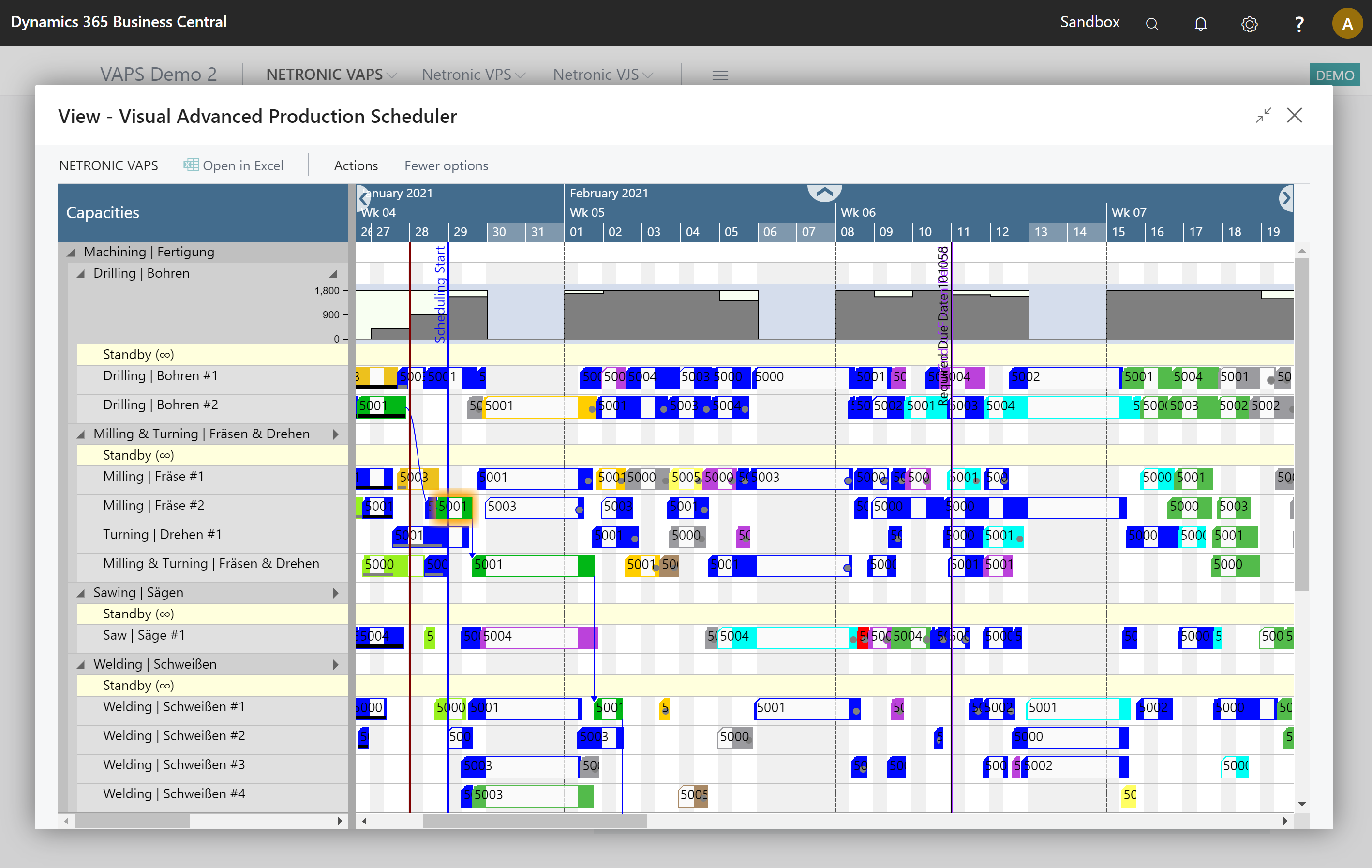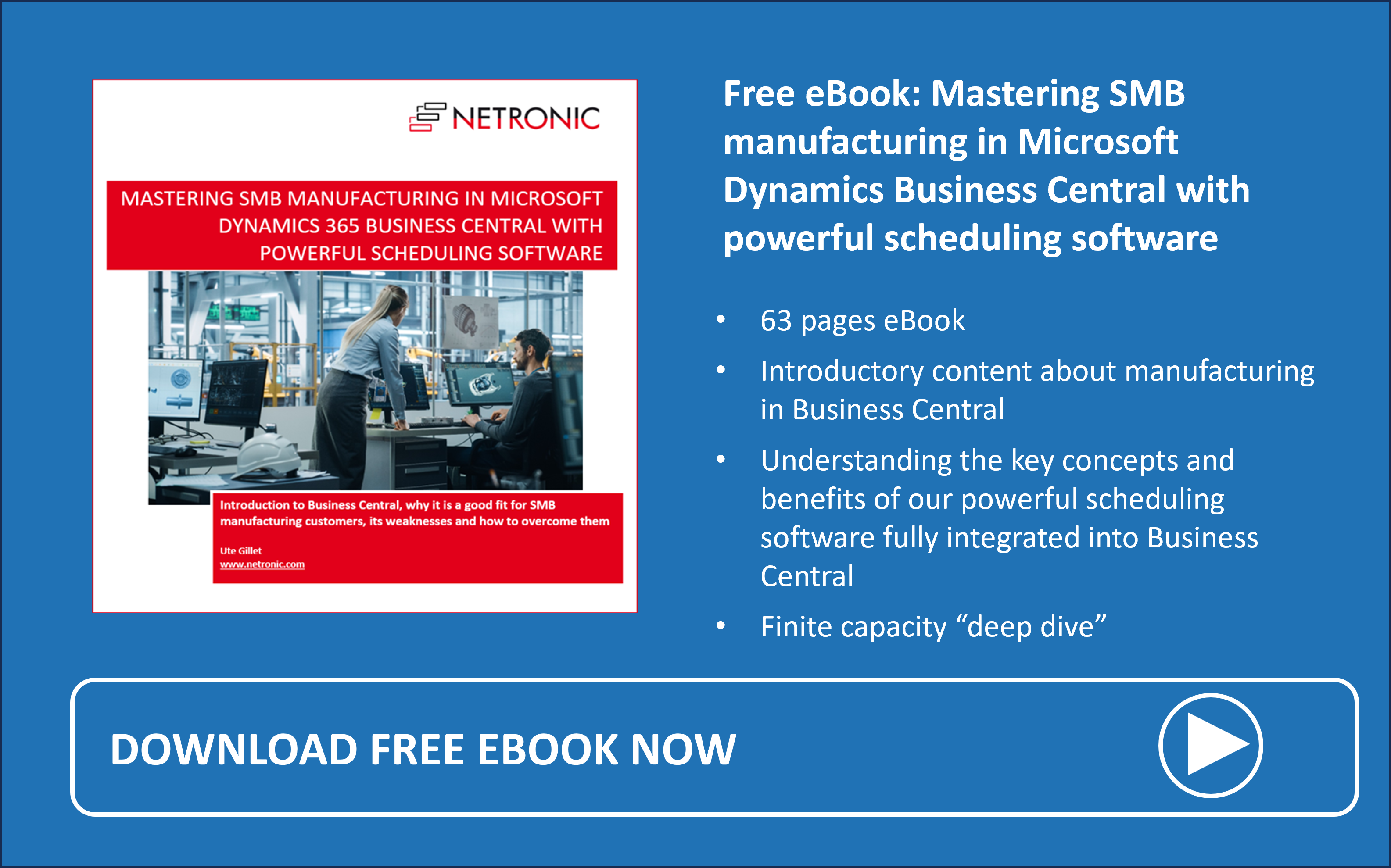Microsoft Dynamics 365 Business Central is a business management solution for small and mid-sized organizations. The software automates and streamlines business processes and helps SMB customers to manage their business. Business Central not only fully integrates with Microsoft's office product family. Moreover, it is highly adaptable and extensible with a plethora of apps provided by Microsoft's business application app store called AppSource. As such, Business Central enables companies to manage their business, including finance, manufacturing, sales, shipping, project management, services, and more.
Manufacturing companies that use Business Central gain the same advantages that any user of the solution gets: It supports them in achieving a streamlined, integrated, all-in-one management solution that handles every aspect of their business process from finance to sales, inventory & purchasing, warehousing, and stock management. In addition to this, Business Central comes with out-of-the-box manufacturing capabilities that seamlessly integrate with the modules mentioned before.
This blog post gives an introductory overview of the essential out-of-the-box manufacturing functionalities of Business Central
Overview: Business Central manufacturing essentials
The core of the out-of-the-box manufacturing functionalities is the routing and the BOM (bill of materials). Both are used to create production orders, which are needed to close the gap between supply and demand. The BOM defines which material is needed when producing a certain item. Likewise, the routing defines which machine or work center is needed for how long when the item is produced.
Production orders are always based on the BOM and the routing. They can get created manually, or from a sales order (to fill the specific demand from one particular customer), or by accepting the suggestions of the planning worksheet. The planning worksheet is the frontend to Business Central's material requirements planning (MRP) engine, which seeks at balancing mid-term item demand and item supply.
Once production orders are created, they consume components and can have labor reported towards them. In addition to this, users can report the time on which each production order used which machine. This enables a holistic production order costing, and supports the entire "item flow" from a purchase component to WIP (work in process), to inventory, and finally to the cost of goods sold.
This is achieved with the following building blocks of the out-of-the-box Business Central manufacturing capabilities.
Out-of-the-box Business Central manufacturing building blocks
Production orders
Production orders are the cornerstone of Microsoft Dynamics 365 Business Central manufacturing. They are defined and made up by the routing and the BOM. They are used to manage the conversion of purchased materials into manufactured items. Business Central allows users to apply five different statuses of a production order. These are: simulated, planned, firm planned, released, and finished. These statuses support different use cases of production order handling - from costing and quoting, over planning to execution and reporting.
 As a consequence, production orders contain the following information:
As a consequence, production orders contain the following information:
- Products planned for manufacturing
- Materials required for the planned production orders
- Products that have just been manufactured
- Materials that have already been selected
- Products that have been manufactured in the past
- Materials that were used in previous manufacturing operations
Production and inventory planning
Business Central provides users with an engine to calculate the master planning schedule and the material requirements based on both actual and forecasted demand. While the actual demand e.g. originates from existing sales orders, the forecasted demand results from a separate demand forecasting functionality.
The manufacturing user can decide to either calculate either the master planning schedule (MPS) or the material requirements planning (MRP) or to do both at the same time. MPS and MRP are built on the same planning engine. MPS is the calculation of a master production schedule based on actual demand and the demand forecast. MRP is the calculation of material requirements based on actual demand for components and the demand forecast on the component level. MRP is calculated only for items that are not MPS items.

The purpose of MRP is to provide time-phased formal plans, by item, to supply the appropriate item, at the appropriate time, in the appropriate location, in the appropriate quantity. The output of an MRP run typically is the creation of new production orders to balance item and component demand with the respective supply.
The MPS/MRP engine is based on the assumption of infinite capacity.
Production capacity
To convert the material into produced end items, production resources must be set up in the system. Both operators and machines are represented as machine centers in Business Central. They can get organized in work centers and work center groups.
The user can define the production capacity of each resource. Capacity is defined by the work time available in the machine and work centers, and is governed by calendars for each level. A work center calendar specifies the working days or hours, shifts, holidays, and absences that determine the work center’s gross available capacity (typically measured in minutes). The machine center calendar gets inherited from the respective work center. All of this is determined by defined efficiency and capacity values.
When these resources are established like this, they can be loaded with operations according to the item's defined routing,
Visualizing the manufacturing module - visual production scheduling extensions
Our two visual scheduling solutions, namely, the Visual Production Scheduler and Visual Advanced Production Scheduler, are both fully integrated into the manufacturing module of Business Central. In relation to the functionalities stated above, both solutions give you the visualization of the following:
- Production orders & routings
- Capacity management on machine centers & work centers
- Demand planning with integration to the MRP (VAPS only)
- Inventory planning with the introduction of EMAD (earliest material availability date) and the availability view (VAPS only)

Although the two products have their differences, in general, they give you the following advantages:
- Better shop floor transparency
- Increase on-time deliveries
- Better bottleneck recognition
Want to learn more about powerful scheduling software for Microsoft Dynamics 365 Business Central?
Download our free ebook "Mastering SMB manufacturing in Microsoft Dynamics 365 Business Central with powerful scheduling software".

